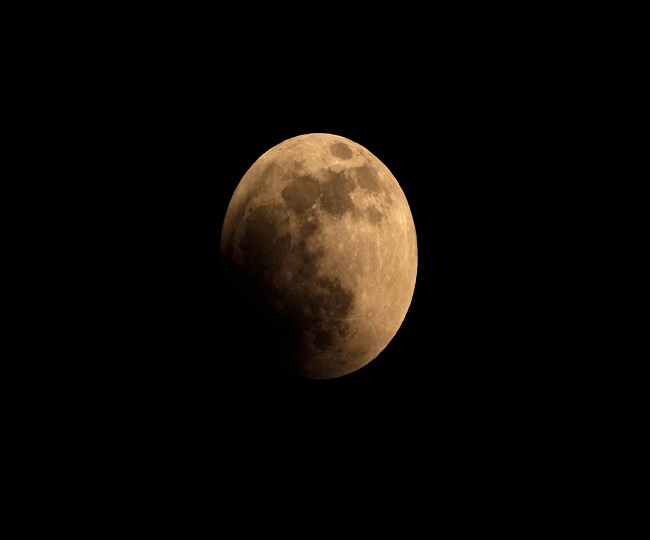- By Lakshay Raja
- Thu, 03 Sep 2020 11:30 AM (IST)
- Source:JND
New Delhi | Jagran Trending Desk: In a bizarre discovery, planetary scientists have detected oxidized iron mineral hematite on the surface of Moon even though the celestial body lacks both oxygen and liquid water for its formation. In addition, Moon is constantly bombarded with a stream of hydrogen from the solar wind, a reducing agent that acts in opposition to oxidation, which makes the formation of hematite difficult even in the presence of right conditions.
"It's very puzzling," NASA quoted planetary scientist Shuai Li of the University of Hawaii, as saying. "The Moon is a terrible environment for hematite to form in." So he turned to JPL scientists Abigail Fraeman and Vivian Sun to help poke at M3's data and confirm his discovery of hematite.
"At first, I totally didn't believe it. It shouldn't exist based on the conditions present on the Moon," Fraeman said. "But since we discovered water on the Moon, people have been speculating that there could be a greater variety of minerals than we realize if that water had reacted with rocks."
Li is the lead author of this researched published in Science Advances. The paper reviews data from the Indian Space Research Organization's Chandrayaan-1 orbiter, which discovered water ice and mapped out a variety of minerals while surveying the Moon's surface in 2008.
The paper offers three possible explanations. The first envisages the source of oxygen as out planet Earth. Earth's magnetic field trails behind the planet like a windsock. In 2007, Japan's Kaguya orbiter discovered that oxygen from Earth's upper atmosphere can hitch a ride on this trailing magnetotail, as it's officially known, traveling the 385,00 kilometres to the Moon, as per a statement by NASA
Secondly, Earth's magnetotail may blocks over 99% of the solar wind during certain periods of the Moon's orbit, specifically, whenever it's in the full Moon phase, thereby preventing the Moon from being bombarded with a stream of Hydrogen for a certain period.
The third piece of the puzzle is water. Li proposes that fast-moving dust particles that regularly pelt the Moon could release the surface-borne water molecules on Moon and mix them with iron in the lunar soil. During just the right moments – namely, when the Moon is shielded from the solar wind and oxygen is present – a rust-inducing chemical reaction could occur, as per the statement.
